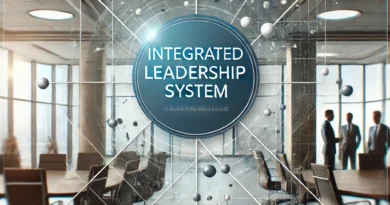Discover the Pitfalls: What Is the Danger of Wearing One Hat Leadership?
However, some leaders make the mistake of adopting a single leadership style. They ”wear one hat” and use the same approach in every situation.
This can be problematic as it stifles creativity, adaptability, and team engagement.
This article examines the pitfalls of “one-hat” leadership and investigates why this type of leadership is unhealthy for both leaders and organizations.
Indeed, alternative strategies are also discussed where there is flexibility and responsiveness to different leadership issues.
So, let’s understand the issues in “one-hat” leadership and what can be done to fix them.
Introduction
In modern times, leadership has become a critical aspect of every business. Companies now deal with more complex and unpredictable challenges. Because of this, leaders are forced to be multidimensional and use more than one style and approach.
Many leaders continue to use a single style in different contexts.
It’s easy to think these sorts of “one-hat strategies” would effectively combat so many problems and come out on top, but they do more harm than good. This approach damages an organization’s capabilities. Employees suffer low morale and feel disconnected and underappreciated by their leaders.In addition, a single approach to leadership may impede creativity. The organizational landscape is changing and requires multidimensional thought processes. “One-hat” leaders may not cope well with constant change or new technology. This sort of rigidity may cause a plethora of opportunities and competitive disadvantages.
The importance of adopting different forms and styles of leadership cannot be overlooked. It may overcome the challenges of inertia and foster organizational change. Evolving leaders are better suited to their organizations’ changing environments. They can help motivate teams and enhance productivity.
Agile leadership can strengthen organizational climate resilience. Moving away from the limitations of “one-hat” leadership leads to other forms of tremendous organizational success. In this essay, we seek to establish the importance of adaptive leadership and how it can be achieved.
Definition of One Hat Leadership
“The One Hat” approach in leadership applies one leadership style across the board. This applies a single approach to an organization irrespective of its situation or team. The leaders employing this style stick to their preferred approach in all situations regardless of the diversity within the context.
“Head of the hat” leadership has constraints that hinder its effectiveness. To illustrate, leaders could be overly dependent on authoritative or directive performance strategies. Such strategies may serve their purpose in specific contexts but will not appeal to all. Sticking to one strategy risks leaders becoming detached from their teams.
Employees could end up feeling excluded or even ignored.The one-head concept fails to grasp the intricacy of social interaction and organizational structure. The modern workplace calls for sophisticated approaches to solving differing challenges. By realizing this Hayekian definition, we can start to criticize its benefits and employ them more pragmatically.
Need of Different Leadership Styles
With a multitude of issues confronting the world, leaders require different skills. The readily apparent advantage of adopting such leadership is that it encourages the “leader-follower” relationship. It is easier to engage a focus group when leaders are available in a less formalized way.
Employers get value for their money since various leaders increase productivity. With a range of leaders, the employees get more opportunities to learn. Diverse leadership enhances innovation and creativity. With different strategies, teachers can question and break norms, foster new ideas, and motivate their subordinates.
Employees are treated with dignity because they know their leaders are accommodating and flexible.Leaders’ flexibility also helps create a favorable workplace culture. It reflects a readiness to change and improve. For example, a leader with a mix of authoritative and consultative styles is more likely to respond to the team’s needs.
They may also influence changes in their organization as they are sensitive to the unique capabilities of their subordinates.In addition, flexible leadership styles can fill the gap in communication. They promote a culture where a variety of opinions are thrown in to reach a decision.
Organizations need to foster different styles of leadership to flourish in the dynamic and complicated world. This will ensure that they achieve their broad strategic objectives more effectively.Understanding the Concept
One’s leadership talent is the most highly sought-after attribute today.
It is the ability to guide a company that requires traversing complex circumstances and changes. The winning leaders appreciate that no style of management can solve all problems. A situation, culture, and the team’s composition should all determine how leadership should be done.Being open to changing one’s approach makes a leader more competent. It enables one to approach many challenges with the appropriate strategy and be transformational when the surrounding context requires it. It is also true that an absence of diversity in leadership results in weaker teams and lower levels of job satisfaction.
In the 21st century, a leader has to learn to embrace a variety of approaches to people to enable growth and innovation.The “one-hat leadership” strategy, on the other hand, lacks flexibility. Leaders who fixate on a single approach may struggle to connect with their teams.
This may hinder the organization’sorganization’s ability to change and grow in today’stoday’s ever-changing business environment. To move their organizations forward, leaders have to expand their leadership toolkit, which allows for improvement and development.What is the Meaning of “One Hat Leadership” Cliché?
“One-hat leadership” is a cliche that suggests overreliance on one leadership style. Leaders who subscribe to this method tend to choose the most comfortable approach. It could be hard-lined authoritarian, participative, or transformational. The world is a no-rules bank helicopter.
Whatever the chosen approach is, the issue comes into play when it’s taken too far and used in every scenario.Such leaders assume that their style will produce the same results no matter the circumstance. They do not take into account varying team dynamics and project parameters.
This can suppress creativity, stifle innovation, and create a dull workplace. Undiversified leaders miss the opportunity to capitalize on their team’s strengths and the ever-changing industry gaps.Put, “one-hat” leadership restrains development and hinders change. Leaders who realize that one cap is not enough can create environments where people flourish.
Because of their prototypical approaches, these leaders are better able to solve problems and more capable of steering the organization during turbulent times.The History of Leadership Styles in Brief
Over the years, leadership theories have matured. They have gone from rigid hierarchies to more progressive and agile approaches.
Most of these earlier leadership models relied on the power version and control of subordinates’ command techniques. The industrial leadership style served the purpose with a single focus on order and obedience.As organizations increased in size, the democratic style of leadership was widely accepted.
Then, there was democratic and transformational leadership. These styles were more bottom-up and encouraged collaboration with employees and innovation within the firm. Power was no longer concentrated in one person but diffused within the organization to make major decisions and empower teams.Leadership is still progressing today due to globalization and digitalization. Adaptive and situational leadership have become the order of the day. These approaches allow leaders to change with the weather per the business environment. This change is and is expected to be a requirement of modern organizations.
Lifting the “one hat” cap enables leaders to appreciate and engage with different teams while building more resilient and successful organizations.Difficulties with One-Hat Strategy with Leadership
Leadership incorporates so many issues to deal with. For instance, relying too much on one leadership style, one hat leadership, can be detrimental.
Rigid leadership can prove difficult when trying to meet different challenges. This lack of elasticity transcends into limited growth and adaptation, which are fundamental in contemporary business settings.Lack of Flexibility
One of the most austerely dealt issues with “one-hat leadership” is its lack of adaptiveness.
Leaders with a singular leadership style often find it difficult to cope with unforeseen changes and challenges. They may become burned out and have too many multidimensional changes, selling into seek without having much at hand to offer. Nevertheless, due to diverse changes within the market, they have become ineffective. Complacency manifests in a highly competitive landscape, and growth opportunities are lost.When there is an absence of being able to develop creativity, it is eventually worsened by the lack of leadership. Creativity and innovation require a set space with numerous ideas that can solve the concerns of the regions.
One-hat leadership tends to say areas of life should focus on self-preservation. There is a risk of too much emphasis being placed on how things used to be done. This is problematic because leaders are usually very effective when they are flexible in their management style. Some leaders are reluctant and unable to make changes in these situations as organizations appreciate an innovative approach. Such a scenario leads to constant stasis inside an organization, which is sorely lacking compared to those who are more responsive.When no multifaceted leadership is present in such an environment, the team’s morale dips.
A leader has a massive impact on the morale and participation of the employees. Without a positive environment, employees can feel unappreciated and restricted. Lack of exposure to diverse viewpoints makes leaders apathetic or lackluster toward their responsibilities. Employees may feel disconnected from the organization, leading to low productivity. Over time, this gap leads to bitterness, rage, and loss of employees. To mitigate this, leaders need to focus on positive multilateral environments. It fosters positivity and strengthens the feeling of loyalty among employees, making it action-oriented where all parties benefit.One-Sided Leadership and Its Controversies
The do-it-all approach suffers from multiple weaknesses that have tremendous potential to weaken an organization. The most severe challenge is the tendency to generalize nuanced issues overly. Such leaders may do away with the complex nature of most business moods and prefer simple, straightforward games.
While it can be comforting, this strategy seldom works sustainably. Leaders do not change their ways; they are often overtaken by those who know how to deal with obstacles. Now, let’s take a closer look at the risks of this one-sided method.Developing a decision jointly does not involve making stern decisions in an organization; however, it suppresses mounting problems that can potentially crumble an organization’s prospects. This kind of decision can result in biased decisions. When a leader works without a detailed discussion, he will not have the necessary feedback to enable him to polish his models.
Such choices made without sufficient consultation can harm an organization’s performance. Besides, such top-down approaches will cause discontent and distrust among team members, threatening a more significant performance gap. Such sentiments threaten the trust and cohesiveness built and further hamper the organization’s competitiveness.Single Skillset Overreliance
Single skill set reliance makes leaders lackluster. Every business needs multiple skills at this age. Mastering skills from the past may not provide the expected results in the future. The need for new skills and their modification weakens such leaders as industries grow.
Such leaders will continue to lag. The breadth of a leader’s influence is also impacted negatively as they have only a slim skill repertoire, making them ineffective in many spheres of life.Leadership Gaps
Leading individuals have particular areas in which they are relatively less observant, called gaps.
“One hat leadership” makes this blindspot glaringly worse. Leaders exposed to similar modes of operation are likely to miss out on essential factors. They can miss critical information, growth opportunities, or important stakeholder insights. These mistakes can easily lead to missed opportunities or even significant problems. To combat these blind spots, actively looking for novel information is critical. Looking for a broader range of ideas and approaches makes the gap narrower.Case Studies
Analyzing case studies and detecting information on the subjects brings to light the key negatives of the “one-hat leadership” model.
Many leadership approaches have posed a severe danger for several companies. On the other hand, some companies have thrived through commendable adaptive approaches. These scenarios teach a lot to current and future leaders. They endow modern leaders with information about the importance of different leadership styles and how they affect an organization. Exploring these forces can bring about more capable and robust leadership across industries.Lack of Different Leadership Styles in a Business Setting: Case Study
For instance, a former Tech Valley company that was once a major distributor of innovative products.
On the other hand, one of the significant failures of the company was that its CEO trumped the company to strictly hierarchical decision-making. This inhibited input from creative teams and severely constrained innovation. The company’s products started to tread water, and competitors began expanding to more innovative cutting-edge technologies. As a result, their market share decreased, and the company’s employee satisfaction went down the drain. Ultimately, they could not adapt to modern market demand and failed to alter business leadership practices accordingly.Another example is a provocation about a retail business that failed to adapt to the new digital world.
The leaders focused on preserving the traditional brick-and-mortar business models, ignoring the e-commerce opportunities. This focus led to losing money and their competitive position. This failure of the company’s diversification in leadership styles slowed down its digital transformation, impacting how and when profitability and growth occurred.Organizations Who Succeeded Because Of Adaptive Leadership
On the opposite spectrum, some organizations have done well because of the adaptive leadership approach. For example, a global fashion retailer is well known for having their business and leaders set in a very adaptive manner.
The leadership team engendered an environment of creativity and teamwork. Adopting multi-leadership styles also encouraged the growth of creativity in the organization. With such styles, they were able to quickly adapt to the diversifying or changing of styles and tastes of people, which enabled them to be a leader in the industry and enhance customer loyalty.In the same way, a financial company had a more complicated situation when it encountered an economic recession. However, the company recovered with the change of leadership core to a more participative style where all team members, regardless of position, were brought into making decisions.
Because of the various ideas brought by the different perspectives, the company was saved because of this inclusiveness. The company’s robustness and performance were achieved due to effective adaptive leadership.Understanding Adaptive Leadership and its Benefits
Individual-centered leadership is troublesome, but a remedy exists in this type of leadership.
It offers leaders an option to change and diversity. Embracing change itself becomes an asset. Organizations can quickly deal with competing and ambiguous environments by taking different perspectives. Adaptive leadership promotes a culture of resilience by enabling teams to take decisive action towards dealing with challenges. There is an emphasis not on how to achieve yesterday’s results but on what needs to be done today. This approach can significantly impact the performance and culture of an organization. Rather than focusing only on results, leaders will become champions of learning new things and complexing old ideas. Change is not just responded to somewhat. It is anticipated. This makes it possible for organizations to remain effective and competitive in the future.Developing several skills and styles to lead different situations effectively is one way of fostering versatile leadership.
It works only if leaders have self-empathy and understanding. The leader must know where they are strong and their weaknesses. Versatile leaders can thrive anywhere because of their demanding and unyielding nature. This makes it possible for them to gain trust and confidence by being flexible and open-minded, Allowing for such a leadership style, is the very foundation that motivates and strengthens creativity and culture of the company.Fostering Leadership Development Programs
These all have a defined return on investment – the development programs regarding leadership. Such multifaceted practices create well-rounded and agile leaders. In particular, these programs include training sessions, seminars, workshops, and even the practice of mentorship.
These leaders benefit from the guidance of a more seasoned professional. This is useful since it forcefully stretches the organization’s cognitive flexibility. Development programs ensure leaders engage with the latest business trends, keeping them fresh and compelling. They groom leaders to meet challenges head-on with a positive attitude.Advantages of Rotational Leadership Assignments
Almost every leader will tell you that these assignments provide them with unique learning. These types of leadership positions expose leaders to various functions and tasks of an organization. This practice enables them to gain an appreciation of other functions and challenges.
This provides leaders with an all-inclusive perspective of the business. Through this exchange of information, these leaders develop skills and insights that cut across functions. This, in turn, improves their adaptability and promotes a spirit of teamwork. Leaders who have donned different hats of the organization are in a better position, relative to their peers, to make decisions. The position sharpens the leaders ‘ empathy towards team members, resulting in stronger backpacker teams.As we can see, due to the challenges of the modern-day business arena, “one-hat leadership” stands to be detrimental as it did in the past.
This leadership style is innovative and resistant, and faces difficulties in responding to challenges as they arise. On the other hand, those firms that are willing to embrace flexibility tend to do better in the long run. By prioritizing the issue of diversity in leadership, firms tend to produce leaders who are more competent and durable. With an emphasis on growth, adaptive leadership allows for more viable solutions. It nurtures the concept of learning and being cognizant of one’s surroundings while failed attempts of the past are being challenged. Organizations that implement these principles stand a greater chance of surviving the unknown. This form of leadership enables creativity and allows the teams to perform to the best of their abilities. Thus, there is a need to emphasize the need for different leadership styles and how they can be dealt with in training.Summary of Key Issues
Where there are “one-hat leaders,” there is risk, and innovation and adaptability are stifled. Promoting a diversity of leadership styles can strengthen how organizations operate. Adaptive leadership provides greater resilience and responsiveness to situations that require nuanced action.
By fostering these areas, an organization becomes more flexible and innovative. Learning and growth foster adaptability and competitiveness. Balanced leaders have the strength of confidence, humility, and openness to listen to others. Adaptive leadership provides an organization with readiness for today and the future.For organizations to grow, there must be a recognition of diversity in leadership styles. Build adaptive leadership among your teams. Support learning and continuous innovation for successful outcomes.




